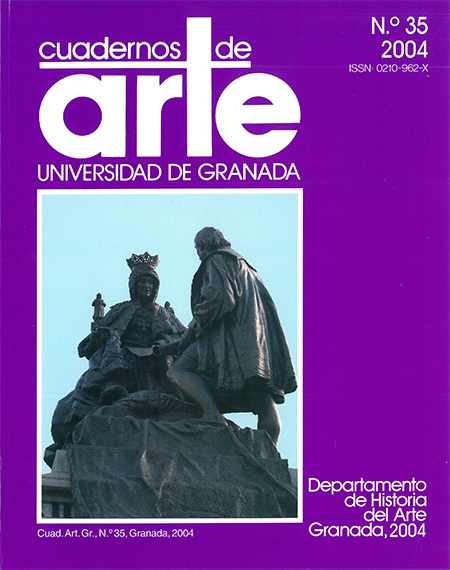The altar of St Ildefonso's Church (Granada, 17th Century): the apparition of St. Leocadia and the dispute with the heretics, an iconographic tradition going back to the 13th Century
Keywords:
Alphonsine miniatures, Medieval miniatures, Altarpiece, Sacred iconography, Erasmus, St. lldefonso Church (Granada), Alphonso X, King of Castile, García Corrales, Juan, Desiderius, St. LeocadiaAbstract
The present paper offers a comparative study of accounts of the life of St. lldefonso and demonstrates that this topic has been a recurren! one both in literature and painting from the 13th century (miniatures from the Cantigas de Santa María) to the 17th century (St. Ildefonso Church, Granada) onwards. We establish the principal themes of this legend and analyse its rhetorical representations in both visual and narrative art. A study of the altar paintings reveals a picture of Erasmus of Rotterdam, and the political and educational relevance of this find coincides with the enthusiasm for the ideas of Erasmus prevalen! in the Granada of that time.Downloads
Downloads
Published
2004-11-01
How to Cite
Montoya Martínez, J., & Cabrerizo Hurtado, J. J. (2004). The altar of St Ildefonso’s Church (Granada, 17th Century): the apparition of St. Leocadia and the dispute with the heretics, an iconographic tradition going back to the 13th Century. Cuadernos De Arte De La Universidad De Granada, 35, 41–61. Retrieved from https://revistaseug.ugr.es/index.php/caug/article/view/8905
Issue
Section
Estudios
License
Los autores que publican en esta revista están de acuerdo con los siguientes términos:- Los autores conservan los derechos de autor y garantizan a la revista el derecho de ser la primera publicación del trabajo al igual que ser licenciado bajo una licencia Creative Commons que permite a otros compartir el trabajo con un reconocimiento de la autoría del trabajo y la cita de la fuente original, con un uso no comercial y siempre que no se hagan obras derivadas.
- Los autores pueden establecer por separado acuerdos adicionales para la distribución no exclusiva de la versión de la obra publicada en la revista (por ejemplo, situarlo en un repositorio institucional o publicarlo en un libro), con un reconocimiento de su publicación inicial en esta revista.
- Se permite y se anima a los autores a difundir sus trabajos electrónicamente (por ejemplo, en repositorios institucionales o en su propio sitio web) antes y durante el proceso de envío, ya que puede dar lugar a intercambios productivos, así como a una citación más temprana y mayor de los trabajos publicados (Véase The Effect of Open Access) (en inglés).


 ISSN-e: 2445-4567
ISSN-e: 2445-4567








